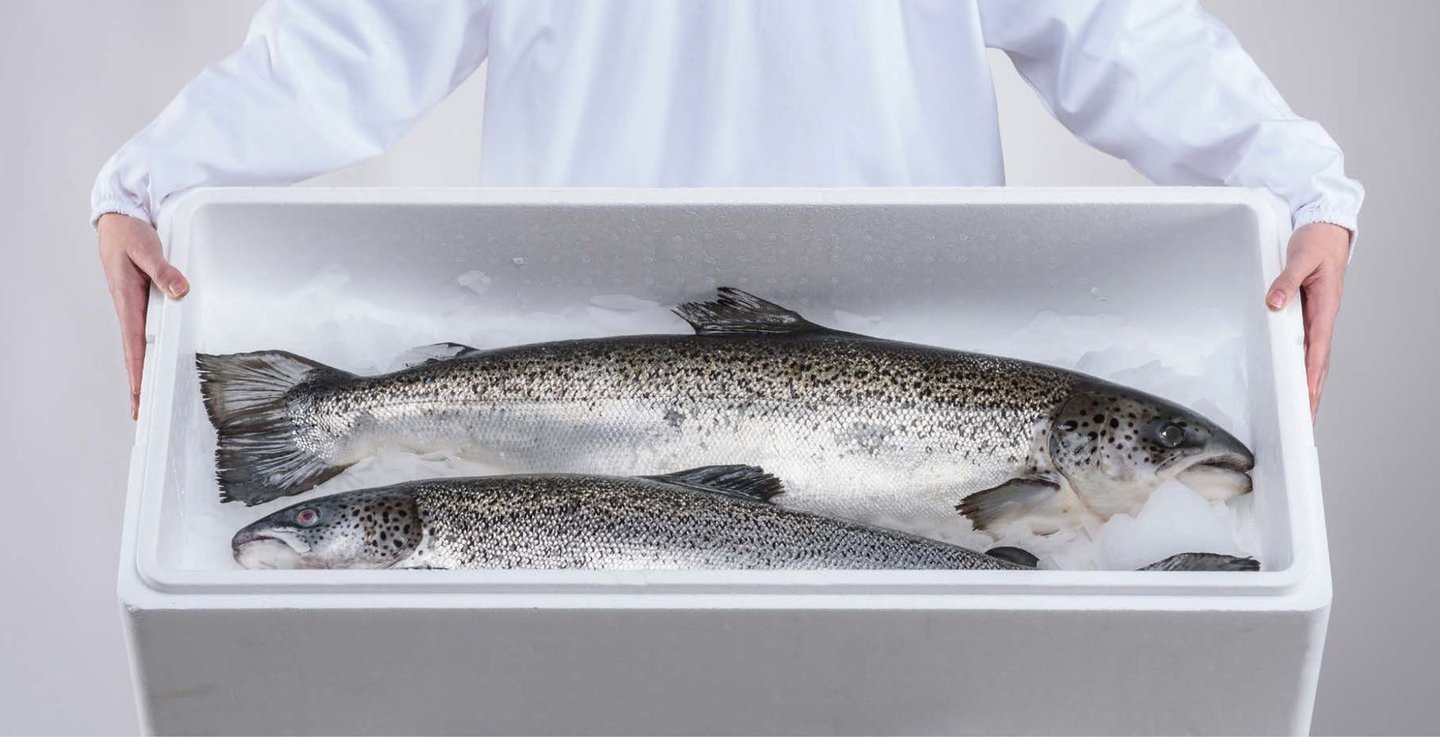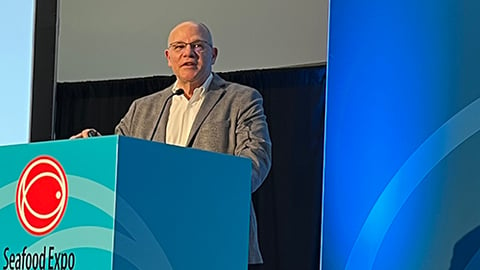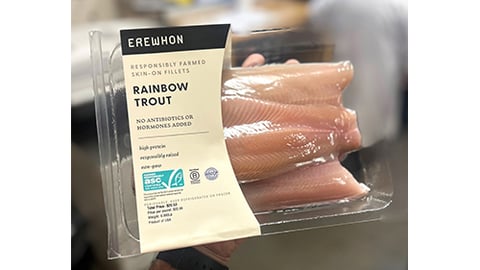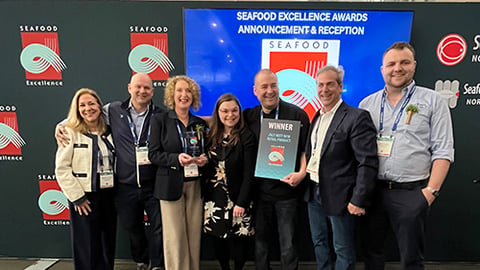Why This South American Country's Salmon Stands Apart
Many regions of the world produce salmon, but the South American country of Chile has a special story to tell. Progressive Grocer met with Ricardo García Holtz, president/chair of the Chilean Salmon Marketing Council (CSMC), as well as president and CEO of Chilean seafood company Camanchaca, to discover just what sets this nation’s salmon apart.
Progressive Grocer: What are the origins of and differentiating factors for Chilean salmon?
Ricardo García Holtz: Chilean salmon farming began in the 1980s as a public-private initiative to develop a new industry in the pristine waters of southern Chile. Chilean Patagonia — renowned for its fjords, archipelagos and sheltered inland seas — offers a uniquely favorable environment. The convergence of the cold Humboldt Current from Antarctica and the warmer tropical waters from the north create ideal farming conditions: temperate waters year-round and natural protection from oceanic storms.
[RELATED: The New Era of Seafood Shopping in 2025]
These geographic and oceanographic advantages are comparable only to Norway and have allowed Chile to become one of the world’s leading salmon producers. Over time, Chile’s slightly warmer waters have enabled faster fish growth, supporting a competitive edge in global markets. Today, the industry is a cornerstone of economic development in the Los Lagos and Aysén regions, supplying high-quality, nutritious protein to major markets such as the United States, Brazil and across Asia.
PG: What is the current economic outlook for Chilean salmon, given current market conditions?
RGH: The Chilean salmon industry has shown remarkable resilience. After facing a significant biological crisis in the late 2000s, the industry underwent a deep transformation, improving biosecurity, environmental practices and operational standards. A decade later, it was stronger than ever.
More recently, however, regulatory headwinds — many driven by environmental activism —have introduced challenges that limit further growth. While we fully acknowledge the importance of sustainable development, some of these pressures originate from foreign-funded groups whose agendas may not align with local communities or the long-term prosperity of Patagonia.
That said, Chilean salmon farmers are deeply committed to improving sustainability. We believe it’s possible to both protect the environment and ensure a thriving aquaculture industry that benefits local economies and meets global demand for sustainable seafood.
PG: How will this play out at U.S. food retailers in terms of availability and pricing?
RGH: With a supportive regulatory environment, Chile will continue to supply the U.S. market consistently and competitively. Chilean salmon is available year-round and offers exceptional nutritional value, particularly as a rich source of omega-3 fatty acids. As American consumers become increasingly health-conscious and environmentally aware, they’re recognizing the benefits of including more seafood in their diets.
[RELATED: Column - Selling the Sustainability of Seafood]
Among all animal proteins, salmon stands out for its versatility, sustainability and convenience. Chile’s scale and expertise allow us to deliver a reliable, premium product to U.S. retailers and consumers 52 weeks a year.
PG: What retail programs is the CSMC developing to encourage U.S. consumption of Chilean salmon?
RGH: During the COVID-19 pandemic, the Chilean Salmon Council launched a nationwide campaign encouraging consumers to prepare salmon at home. The message resonated strongly, and retail sales grew — even as restaurant dining declined. Consumers discovered how easy it is to cook delicious, nutritious salmon meals at home, and that habit has persisted.
Today, in the face of inflation and changing consumer behavior, that value proposition remains powerful. We continue to support campaigns that promote salmon as an affordable, healthy and easy-to-prepare meal option for American families.
PG: What resources does the CSMC offer U.S. retailers to help promote Chilean salmon (signage, shelf talkers, displays, etc.)?
RGH: We offer retailers a dual value proposition: First, we build the Chilean salmon brand around purity, sustainability and origin; second, we provide support in defending that brand from misinformation or unfair criticism.
Through point-of-sale materials, educational content and origin campaigns, we help consumers understand the story behind Chilean salmon — where it comes from, how it’s raised, and why it’s a smart choice for their families and the planet. We’re committed to transparency and partnership with retailers to build long-term trust and sales.
PG: What sorts of results have U.S. retailers seen from previous promotions of Chilean salmon?
RGH: Time and again, we’ve seen that even a small promotional effort — like a temporary price reduction — can lead to a significant increase in demand. Chilean salmon is already a preferred option for many consumers, so when the value is emphasized, sales respond quickly and positively.
These results have been consistent across major retailers nationwide, showing that American shoppers are eager to buy more salmon when given the right message and incentive.
PG: How does the CSMC keep upping the ante on promotions to ensure success?
RGH: Our focus is on building long-term brand equity by reinforcing three key messages: origin, sustainability and ease of preparation. We work closely with retailers to develop in-store and digital content that demystifies seafood and empowers consumers to cook salmon confidently.
[RELATED: How to Land More Seafood Sales]
One of the biggest barriers to seafood consumption is uncertainty in the kitchen. When we help overcome that, we unlock tremendous growth potential.
PG: What types of salmon products are popular in the United States, and how does Chilean salmon meet those needs?
RGH: Fresh fillets and portions remain the most popular formats, driven by their versatility and freshness. However, we’re seeing strong growth in ready-to-eat options, meal kits and single-serve portions — ideal for busy consumers or smaller households.
Chilean salmon is uniquely positioned to meet this evolving demand. Our production scale and quality standards ensure that we can offer a broad range of formats while maintaining freshness, taste and nutritional value.
PG: What’s next for the Chilean salmon industry?
RGH: The future is focused on innovation and continuous improvement. Hundreds of initiatives are underway across farms and processing facilities to enhance sustainability, animal welfare, and operational efficiency.
Our goal is to bring to American dinner tables a protein that not only tastes great, but also reflects the values of health, responsibility and environmental care. Chilean salmon is not just a product — it’s a commitment to doing things right, for today and for future generations.









